Record High Corn Forecast
This article is based primarily on two sets of information:
A. The Crop Bulletin that was issued on November 14, 2023, and
B. Crop Production Executive Summary issued on November 9, 2023. We only used a limited number of graphics from this long presentation…different graphics than we used last month. We provide a link to the full report. For the three main crops the NASS forecasts are higher than many of the industry forecasts so we will see if NASS has it right or if NASS is being overly optimistic.
We are coming to the end of this growing season so we are including both the progress of crops and the estimates of the final production hence the use of the two reports.
This article includes a short international review of agricultural conditions which are generally favorable. I also included U.S. crop-related weather forecasts.
We first look at the National Agriculture Summary. The Tables below the summary have additional data.

| Below is pretty much the same information in table format. However, there is a lot of additional information in these tables. |
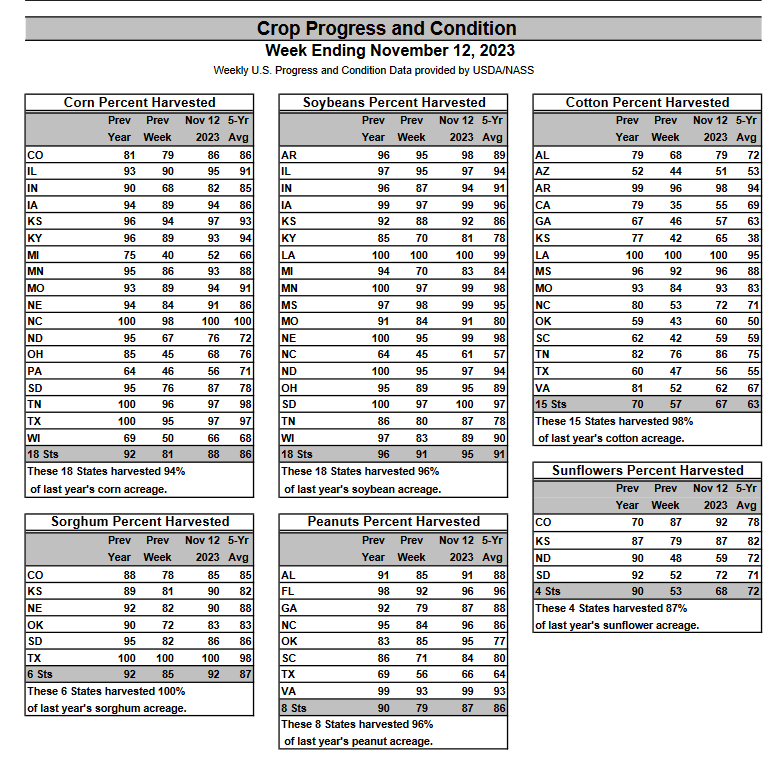
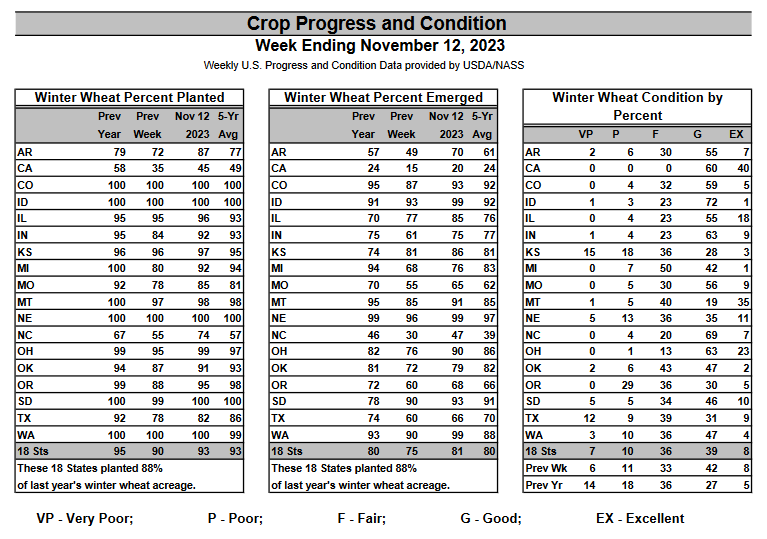
Some additional detail is provided HEREIt is mostly some additional weeks of data and it is all in larger print. |
Now we look at the Crop Production Forecasts.
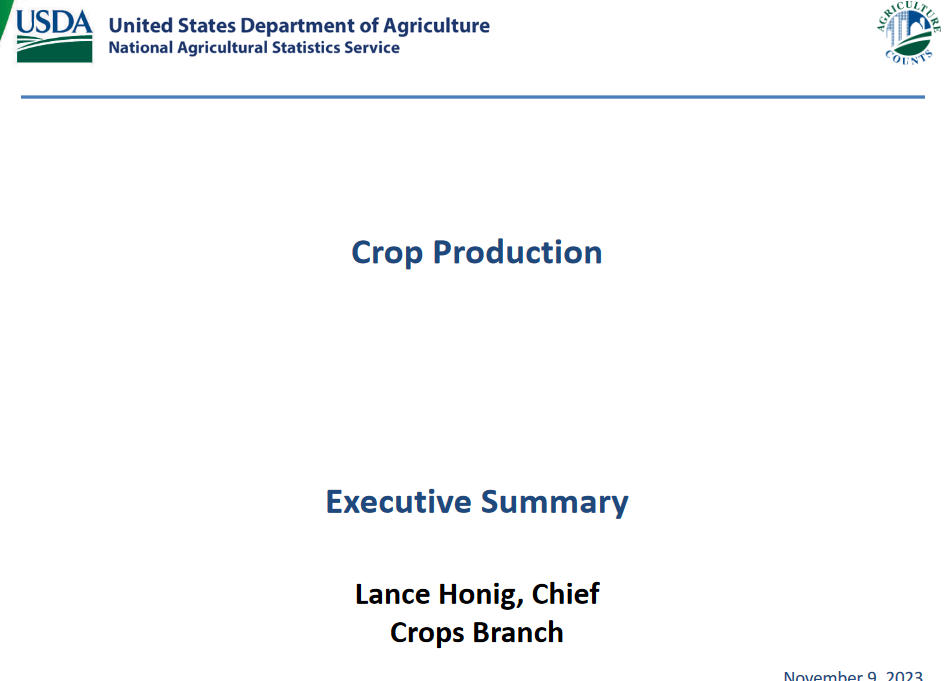
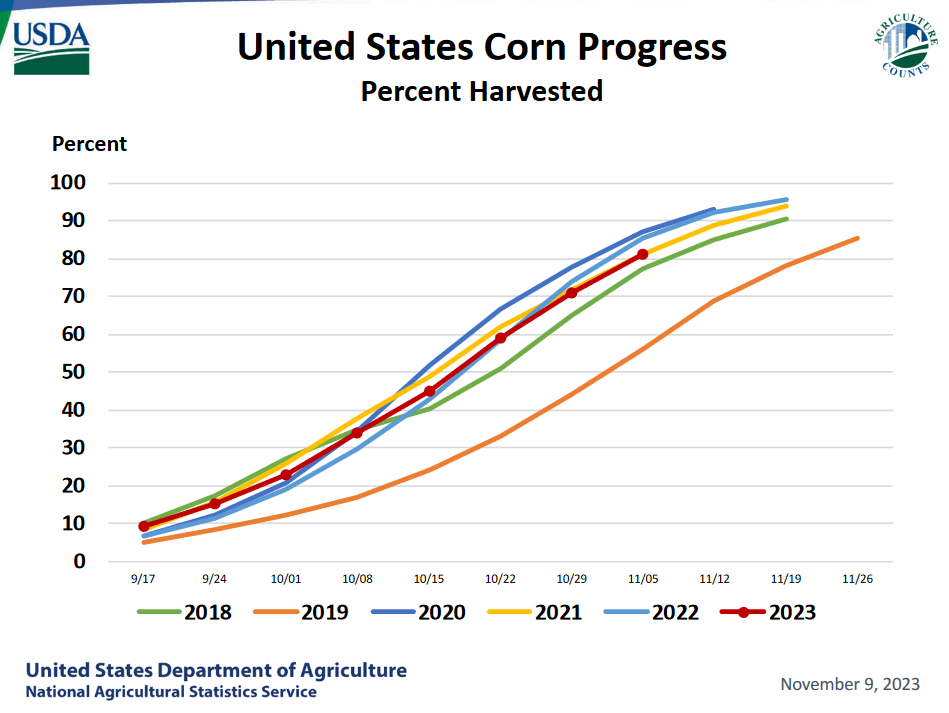
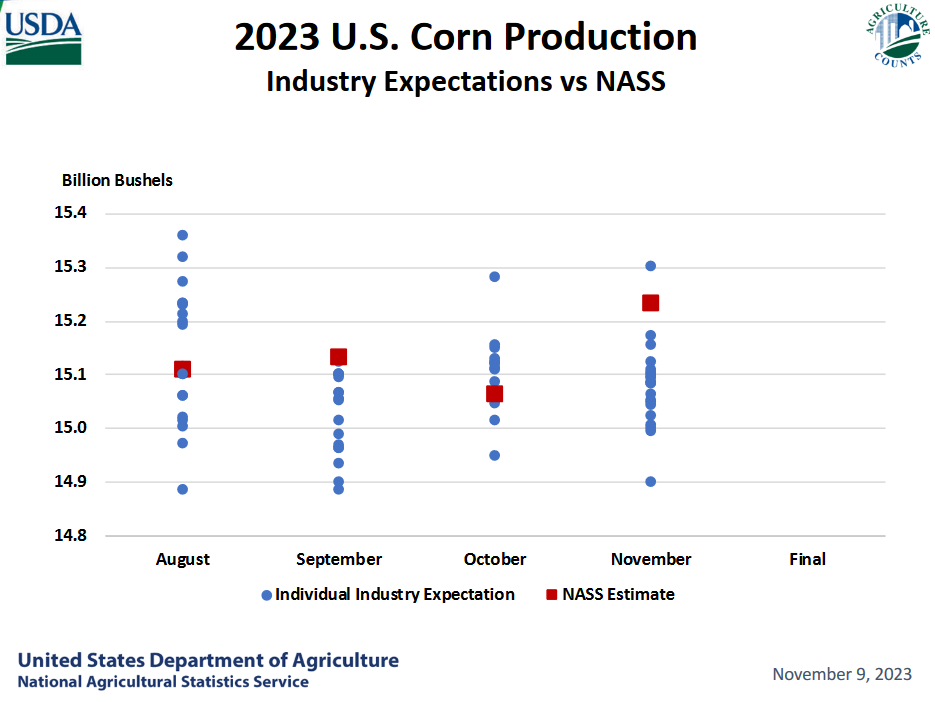
| The top graphic shows the percentage harvested over time and how this year (the red line) compares to recent years. The second chart shows for this year the production forecasts made each month (we do not have the final yet) and how the NASS forecast compares to various industry forecasts. Of note, this month the NASS forecast is higher than most of the industry forecasts. We will see how this plays out. |
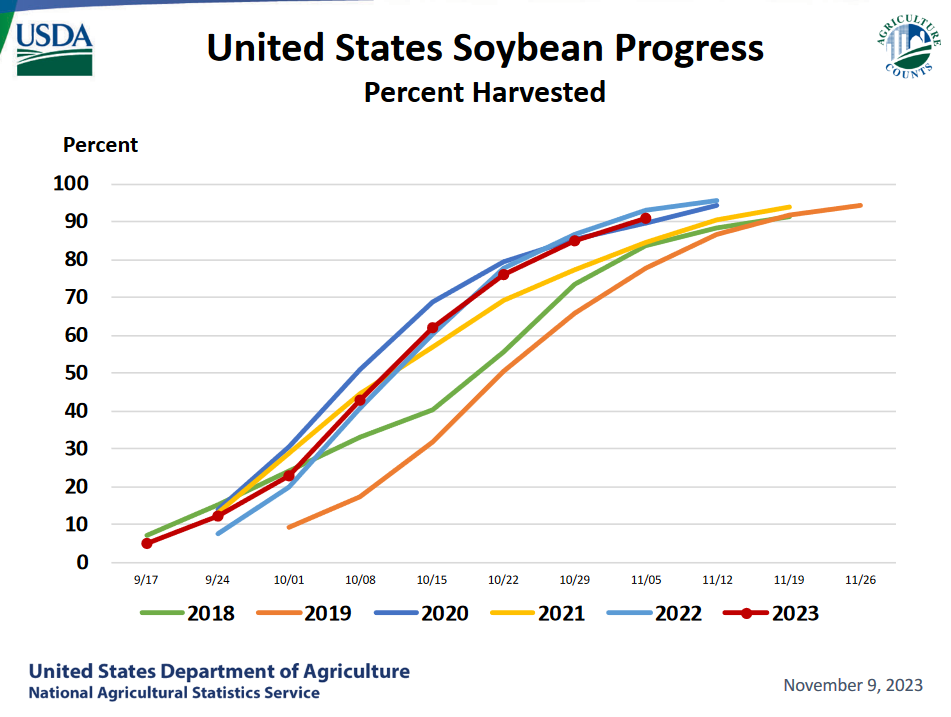

| The top graphic shows the percentage harvested over time and how this year (the red line) compares to recent years. The second chart shows for this year the production forecasts made each month (we do not have the final yet) and how the NASS forecast compares to various industry forecasts. Of note, this month the NASS forecast is higher than most of the industry forecasts. We will see how this plays out. |

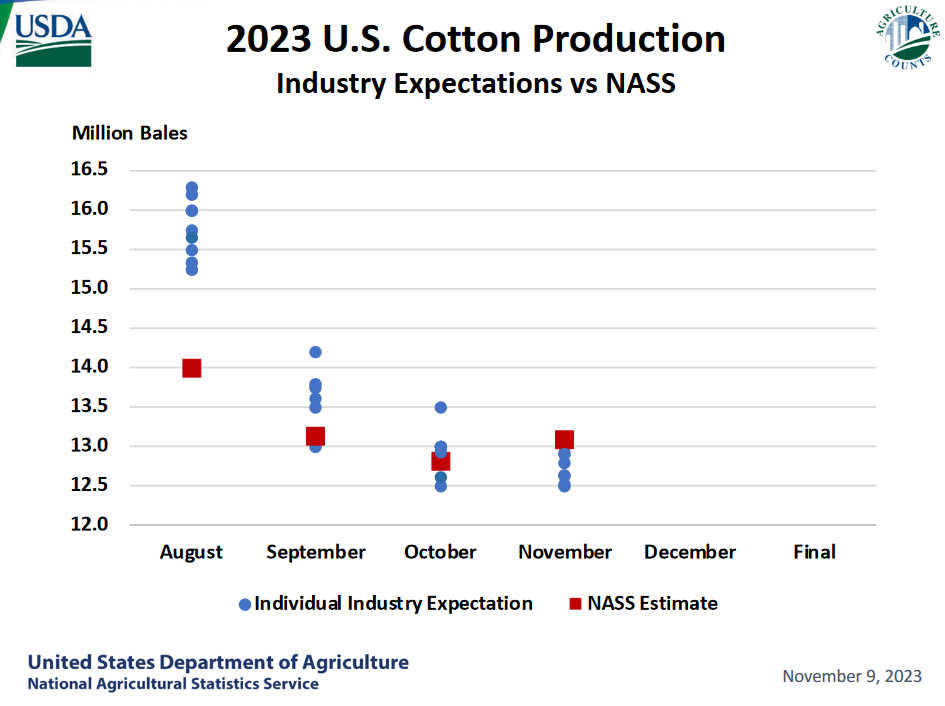
| The top graphic shows the percentage harvested over time and how this year (the red line) compares to recent years. The second chart shows for this year the production forecasts made each month (we do not have the December forecast and the final yet) and how the NASS forecast compares to various industry forecasts. Of note, this month the NASS forecast is higher than most of the industry forecasts. We will see how this plays out. |
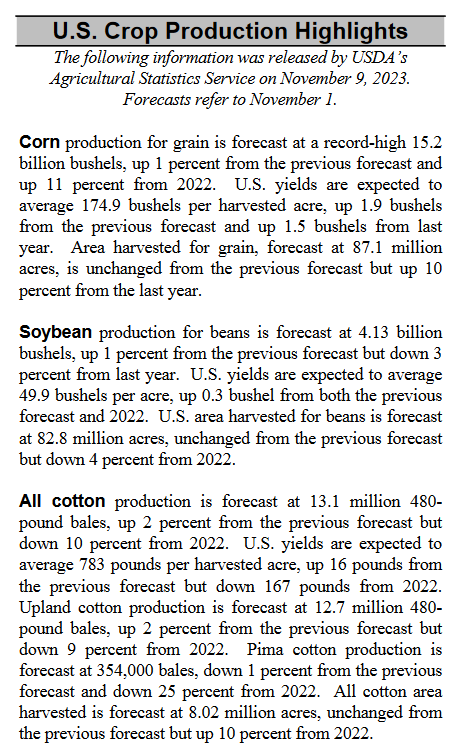
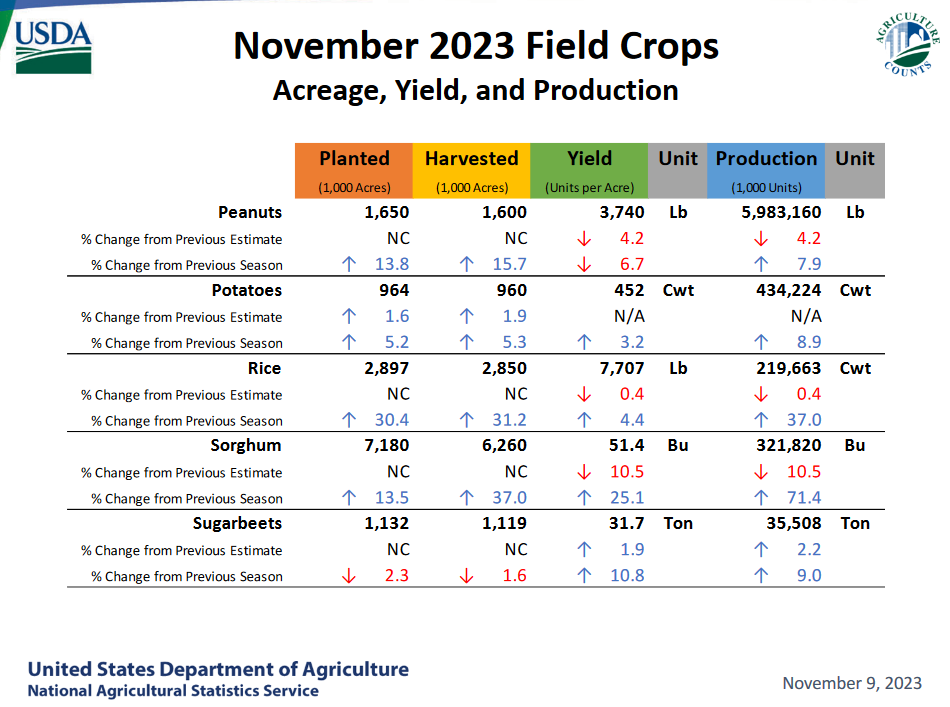
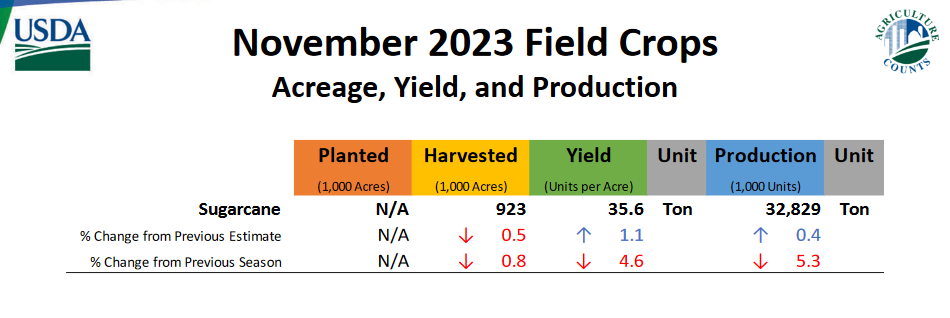
| Here we show summary information for various field crops. A lot of information is provided including the change from the previous estimate. |
| The full report can be accessed HERE. As you can see it is a long report but worth reading. |
Now we look at the weather that is expected during this final part of the harvest and for winter crops.
| 6
– 10
|
|
|
| 8
– 14 |
|
|
| 3
– 4 |
|
|
HAZARDS OUTLOOKS
Here is the latest Day 3 -7 and Day 8 – 14 hazards forecasts which are updated only on weekdays. I think it supplements the standard weather forecast.
| You can track the situation daily by accessing our Daily Weather forecast which you can access HERE. But the weather outlook maps in this article also update. Of interest are the areas of reduced precipitation. |
Looking at the month-to-date precipitation

| You can see the wet and dry areas. The first 16 days of November were mostly dry. |
International Report

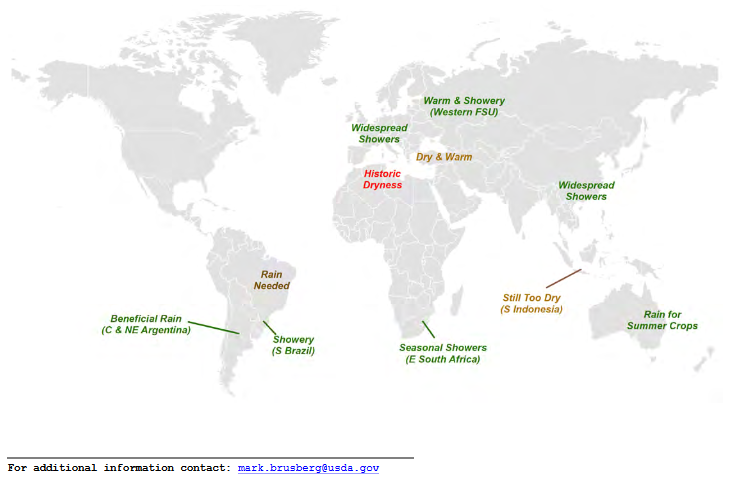
| The table and the map show weather impacts on crops internationally |
Sources of Information
Weekly Updates can be found HERE
and perhaps more directly HERE
Additional Useful Sources of Information
WASDE: World Agricultural Supply and Demand Estimates HERE
NASS Report Schedule HERE
Executive Briefings HERE
Economics and Prices HERE
Office of the Chief Economist HERE.
Drought information by crop HERE
–
| I hope you found this article interesting and useful. |
